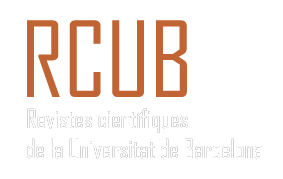Ethical issues related to gen editing using CRISPR-Cas9 technology
DOI:
https://doi.org/10.1344/rbd2021.53.33505Keywords:
CRISPR/Cas9, Bioética, Eugenesia, Misión a Marte, Big Data, Mejora Humana, Edición genéticaAbstract
Immersed already in the 4th industrial revolution, clearly the digital age has invaded our lives. People tend to celebrate every technological and scientific advance without thinking properly about the possible undesired side effects or unexpected consequences. One of the most outstanding achievements of the last years has been the CRISPR/Cas9 technique. It seems to be the magic wand to solve whatever. In this article I propose to think critically about the ethical issues related to this incredible technique. I will focus this work on 3 ethical aspects of gene editing: 1. The link between gene editing and the old concept of eugenics; 2. Aspects related to the idea of modifying human genetics in order to conquer other planets and 3. The ethical implications of uploading all these data to the web. Finally, I suggest focusing on interdisciplinary ethical discussion, the dialogue between professionals, institutions and government which must ensure the protection of the autonomy of patients and the safeguarding of their rights. To conclude, the suggestion of considering the role of Universities in ethical education of the future professionals with a practical rather than a theoretical approach is considered, with special attention to the integration of cybernetics in medicine.
Downloads
Published
How to Cite
Issue
Section
License
Copyright (c) 2021 Andrea Actis

This work is licensed under a Creative Commons Attribution-NonCommercial-NoDerivatives 4.0 International License.
 The author retains the copyright and grants Revista de Bioética y Derecho the right of first publication of the article. All articles published in Revista de Bioética y Derecho are under Creative Commons licensing Recognition – Non Commercial – NoDerivedArtwork (by-nc-nd 4.0), which allows sharing the content with third parties, provided that they acknowledge its authorship, initial publication in this journal and the terms of the license. No commercial use of the original work or generation of derivative works is permitted.
The author retains the copyright and grants Revista de Bioética y Derecho the right of first publication of the article. All articles published in Revista de Bioética y Derecho are under Creative Commons licensing Recognition – Non Commercial – NoDerivedArtwork (by-nc-nd 4.0), which allows sharing the content with third parties, provided that they acknowledge its authorship, initial publication in this journal and the terms of the license. No commercial use of the original work or generation of derivative works is permitted.






